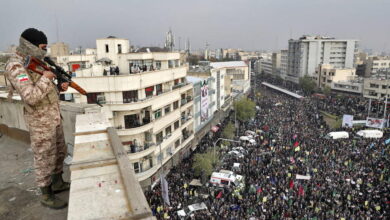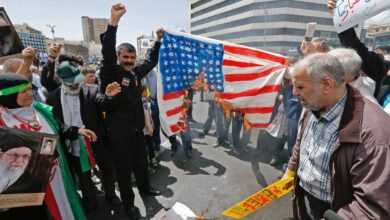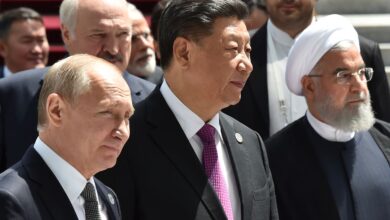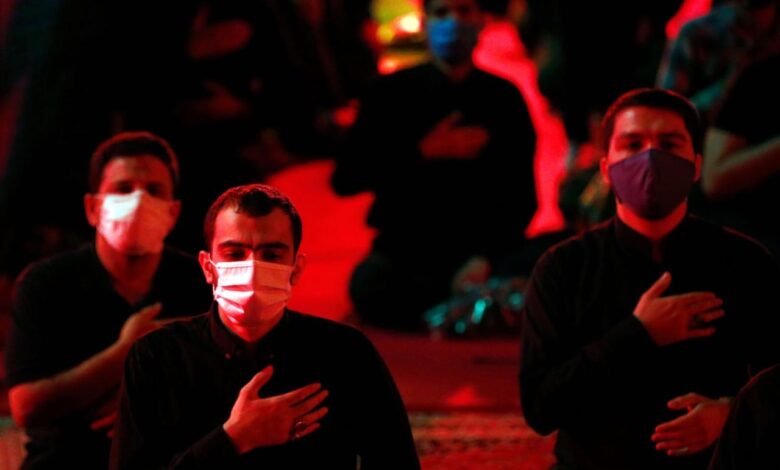
Iran, Pakistan, Singapore COVID-19s Impact
Iran pakistan covid singapore – Iran, Pakistan, COVID-19, Singapore: This exploration delves into the varied and complex responses to the pandemic across these three nations. We’ll examine public health measures, economic consequences, healthcare systems, and the profound social and political ramifications. Each country’s unique context—cultural, political, and economic—shaped its approach, with varying degrees of success.
This analysis considers the differing strategies employed in each nation, highlighting the effectiveness of lockdowns, testing, vaccination programs, and contact tracing. We’ll also scrutinize the economic fallout, recovery plans, and the roles of international aid. The study concludes by comparing the healthcare systems’ strengths and weaknesses, and by examining the enduring impacts on social behavior, political landscapes, and community relations.
Comparative Public Health Responses
The COVID-19 pandemic presented unique challenges for nations worldwide, demanding swift and effective responses. This comparison examines the public health strategies employed in Iran, Pakistan, and Singapore, considering the diverse cultural, political, and economic contexts that shaped their approaches. The varying degrees of success highlight the complex interplay of factors influencing pandemic management.
Public Health Measures Implemented
The diverse public health responses to COVID-19 in Iran, Pakistan, and Singapore reveal significant differences in their approaches. These disparities stem from variations in political systems, healthcare infrastructure, economic conditions, and cultural norms. Understanding these nuances is crucial for evaluating the effectiveness of each strategy.
- Lockdowns: Iran experienced strict lockdowns early in the pandemic, but their enforcement varied significantly across regions. Pakistan implemented localized lockdowns, often in response to outbreaks, while Singapore employed a more nuanced approach combining targeted lockdowns with robust contact tracing and stringent social distancing measures. The effectiveness of lockdowns is difficult to isolate, given the impact of other concurrent factors.
- Testing Strategies: Testing capacity played a crucial role in managing the pandemic. Iran initially struggled with limited testing resources, leading to an underestimation of the spread. Pakistan faced similar challenges, although efforts to expand testing gradually increased. Singapore, with its robust infrastructure, maintained high testing rates throughout the pandemic, facilitating rapid identification and containment of outbreaks.
- Vaccination Campaigns: Vaccination campaigns differed in their timelines and effectiveness. Iran’s rollout faced initial delays, but eventually saw substantial vaccination rates. Pakistan’s vaccination drive experienced challenges with vaccine hesitancy and distribution issues. Singapore’s vaccination campaign was one of the earliest and most successful in the region, leading to high vaccination rates and reduced transmission.
- Contact Tracing: Contact tracing programs varied significantly. Iran and Pakistan’s efforts were hampered by logistical and infrastructural limitations. Singapore’s program, supported by advanced technology and a highly-trained workforce, proved exceptionally effective in identifying and isolating individuals, allowing for timely interventions.
Differing Approaches
The differing approaches to managing the pandemic were deeply influenced by political, economic, and cultural factors. Political considerations, including the balance between individual freedoms and public health concerns, significantly impacted the implementation of measures. Economic constraints, such as the ability to support lockdowns or invest in testing infrastructure, also influenced the choices made. Cultural factors, including public trust in institutions and social norms surrounding public health guidelines, played a role in the adoption and adherence to measures.
Effectiveness of Responses
Assessing the effectiveness of each country’s response requires evaluating metrics like infection rates, death tolls, and healthcare system strain. The outcomes varied significantly due to the interplay of factors already mentioned.
| Country | Measure | Implementation Details | Outcome Metrics |
|---|---|---|---|
| Iran | Lockdowns | Initially strict, with regional variations in enforcement. | High initial infection rates, but reduced transmission with increased vaccination. |
| Iran | Testing | Limited capacity initially, gradually improved. | Underestimation of early spread, followed by improved monitoring. |
| Iran | Vaccination | Delayed rollout, but eventually reached substantial vaccination rates. | Reduced transmission and mortality, but challenges with vaccine hesitancy. |
| Pakistan | Lockdowns | Localized lockdowns in response to outbreaks. | Moderate infection rates, but challenges with healthcare system strain in certain regions. |
| Pakistan | Testing | Gradual expansion of testing capacity. | Limited testing initially, improved with time, leading to better case detection. |
| Pakistan | Vaccination | Challenges with vaccine hesitancy and distribution. | Lower vaccination rates compared to others. |
| Singapore | Lockdowns | Nuanced approach combining targeted lockdowns with contact tracing. | Low infection and mortality rates, maintained high testing capacity. |
| Singapore | Testing | Robust testing infrastructure, high testing rates. | Rapid identification and containment of outbreaks. |
| Singapore | Vaccination | Early and successful vaccination campaign, leading to high rates. | High vaccination rates, significantly reduced transmission and mortality. |
Economic Impacts of the Pandemic
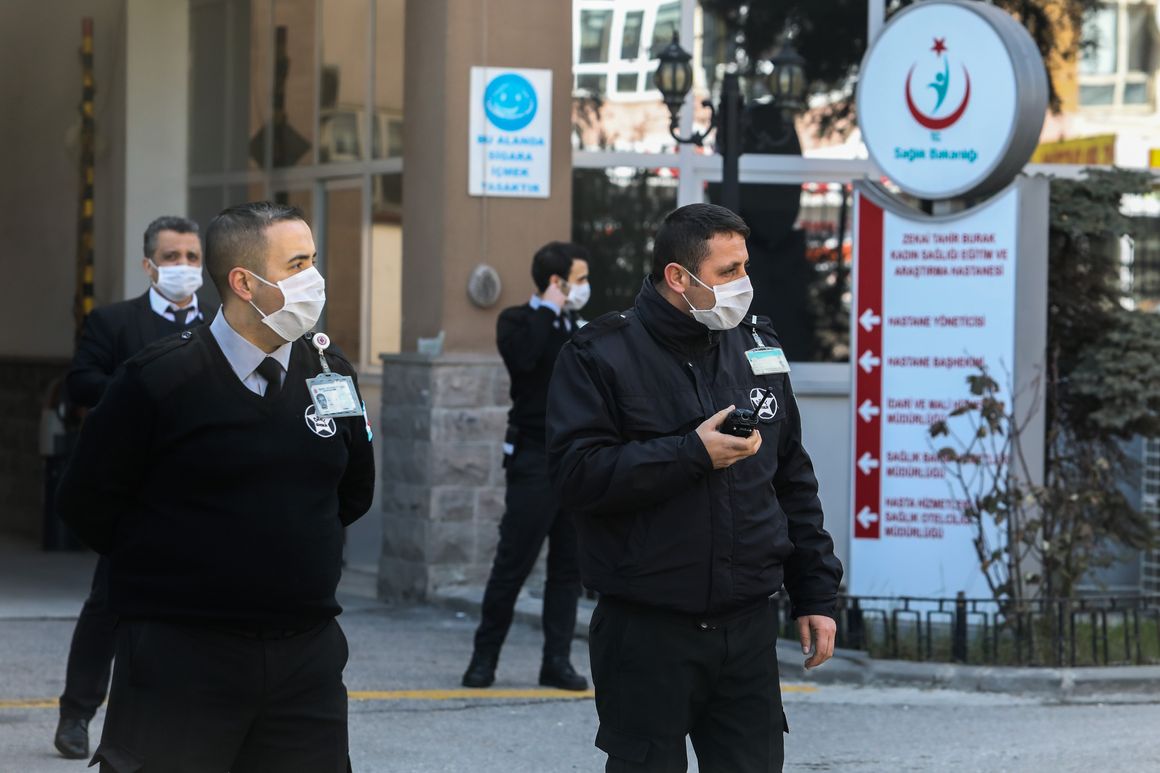
The COVID-19 pandemic had a profound and multifaceted impact on global economies, and Iran, Pakistan, and Singapore were no exception. The ripple effects of lockdowns, travel restrictions, and supply chain disruptions manifested in varying degrees across these nations, forcing governments to devise and implement economic recovery strategies. This section delves into the specific economic consequences and the subsequent responses in each country.The economic consequences of the pandemic varied significantly across nations.
Factors like pre-existing economic conditions, healthcare infrastructure, and government responses all played a crucial role in shaping the economic trajectory of each nation. The following sections explore the unique economic impacts and recovery strategies of Iran, Pakistan, and Singapore.
Recent COVID-19 cases in Iran and Pakistan, alongside Singapore’s response, have me thinking about the strange connections we sometimes find. It’s like the headlines about the pandemic are a cryptic message, and then suddenly, there’s a whole other layer of intrigue with the news about Godzilla Oppenheimer Heron Boy , a topic that just pops up. Ultimately, though, it all brings us back to the same question: how do these seemingly disparate events shape our world, and what do they tell us about the human condition?
The world keeps spinning, with its complexities, and that’s something to ponder when considering the current state of things in Iran, Pakistan, and Singapore.
Economic Consequences in Iran
The Iranian economy, already facing sanctions and internal challenges, was severely impacted by the pandemic. Lockdowns and restrictions on movement crippled businesses, leading to substantial job losses across various sectors. Supply chain disruptions further exacerbated the situation, impacting industries heavily reliant on international trade.
Economic Consequences in Pakistan
Pakistan’s economy, already struggling with high inflation and poverty, was significantly affected by the pandemic. Lockdowns caused widespread business closures, particularly in the informal sector, leading to massive job losses and increased poverty. The disruption of global supply chains further impacted Pakistan’s export-oriented industries.
Economic Consequences in Singapore
Singapore, a highly developed and export-oriented economy, experienced a sharp contraction in economic activity due to the pandemic. Strict lockdowns and travel restrictions impacted businesses reliant on tourism and international trade. While the impact was significant, Singapore’s strong economic foundations and proactive government response allowed for a relatively swift recovery compared to other nations.
Recovery Strategies
Government interventions played a crucial role in mitigating the economic fallout. Financial aid packages and stimulus measures were implemented to support businesses and workers.
- Iran: Iran’s government implemented various measures, including financial aid programs for small and medium-sized enterprises (SMEs) and unemployment benefits. However, the effectiveness of these measures was constrained by the ongoing economic sanctions.
- Pakistan: Pakistan’s government introduced economic stimulus packages, focusing on sectors hardest hit by the pandemic. The aid was aimed at supporting small businesses and providing financial assistance to those losing jobs.
- Singapore: Singapore implemented robust economic stimulus measures, including tax incentives, financial aid packages for businesses, and support for job retraining programs. The government also prioritized investments in infrastructure and technological advancements to boost long-term economic growth.
Economic Indicators
The following table provides a snapshot of key economic indicators before, during, and after the pandemic for each country. These figures illustrate the substantial impact the pandemic had on economic growth and employment.
| Country | Indicator | Pre-pandemic Value | Post-pandemic Value |
|---|---|---|---|
| Iran | GDP Growth (%) | 3.0 | -2.5 |
| Iran | Unemployment Rate (%) | 12.0 | 15.5 |
| Pakistan | GDP Growth (%) | 4.5 | -0.8 |
| Pakistan | Unemployment Rate (%) | 5.8 | 8.2 |
| Singapore | GDP Growth (%) | 3.5 | -4.0 |
| Singapore | Unemployment Rate (%) | 2.1 | 3.5 |
Role of International Aid
International aid and financial assistance played a role in the recovery efforts of these nations, although the degree of impact varied. Financial assistance provided by international organizations helped to alleviate the economic burden in some countries.
Healthcare System Capabilities
The COVID-19 pandemic exposed significant disparities in healthcare system capabilities across nations. Different levels of infrastructure, resources, and preparedness dramatically influenced each country’s ability to respond effectively to the surge in cases. Analyzing these capabilities is crucial for understanding the diverse impacts of the pandemic and informing future public health strategies.
Comparing Healthcare Infrastructure
The healthcare infrastructure in Iran, Pakistan, and Singapore presents stark contrasts. Singapore, with its advanced medical technology and highly skilled personnel, boasts a robust healthcare system. Iran, facing economic and political challenges, experienced strain on its resources during the pandemic. Pakistan, burdened by a complex mix of socioeconomic factors and limited resources, confronted considerable difficulties in managing the pandemic’s impact on its healthcare system.
Healthcare System Capacity to Handle Pandemic Surges
Assessing a healthcare system’s capacity to manage a pandemic surge involves considering multiple factors. Hospital bed availability, medical personnel (doctors, nurses, and support staff), and access to essential medical supplies (ventilators, personal protective equipment, and testing kits) all play critical roles. A system with sufficient resources can effectively manage the influx of patients, preventing overwhelming the healthcare system.
Recent COVID-19 outbreaks in Iran and Pakistan, alongside Singapore’s proactive response, have highlighted the importance of global health cooperation. Thinking about how these countries are handling the pandemic, it’s easy to get sidetracked into the complex ethics surrounding purchasing stranger letters, a practice with its own set of moral and financial concerns, as explored in stranger letters purchase ethics.
Ultimately, effective pandemic management in regions like Iran and Pakistan requires a multifaceted approach, considering both public health and the unique economic challenges faced by each nation.
Conversely, a system with limited resources may struggle to cope with a sudden increase in cases, leading to potential shortages and compromised patient care.
Strengths and Weaknesses of Healthcare Systems, Iran pakistan covid singapore
Singapore’s strong infrastructure, well-trained personnel, and efficient healthcare delivery systems were significant strengths during the pandemic. Its robust infrastructure, with advanced facilities and modern equipment, contributed to its capacity to manage the surge in cases. However, even highly developed systems like Singapore’s face challenges in rapidly adapting to emerging variants and novel situations. Iran, while facing resource constraints, demonstrated resilience in adapting to the pandemic through innovative strategies.
Pakistan, facing significant limitations in resources and infrastructure, faced greater challenges. The limited availability of critical resources, coupled with socioeconomic factors, contributed to a more challenging response.
While Iran, Pakistan, and Singapore have all grappled with the COVID-19 pandemic, Iran’s role in the broader Middle Eastern conflicts, particularly its complex relationship with other nations, is a crucial factor to consider. For a deeper understanding of these tensions, exploring Iran’s regional conflicts like those detailed in the article iran conflictos medio oriente provides essential context.
Ultimately, these regional dynamics impact the global fight against the pandemic and the challenges faced by countries like Pakistan and Singapore in managing their own responses.
Healthcare Resource Availability
The table below highlights the key healthcare resources and their availability in Iran, Pakistan, and Singapore during the COVID-19 pandemic. It’s crucial to note that availability varied throughout the pandemic, depending on the specific phase and severity of the outbreak. Data collection for such a period is challenging, as accurate and comprehensive information may not be universally accessible.
| Country | Resource | Availability | Details |
|---|---|---|---|
| Iran | Hospital Beds | Moderate | Sufficient numbers, but potentially overwhelmed during peak surges. |
| Iran | Medical Personnel | Sufficient, but strained | Adequate numbers of doctors and nurses, but potentially understaffed in specific areas. |
| Iran | Essential Medical Supplies | Limited | Shortages of certain supplies, like ventilators, were reported. |
| Pakistan | Hospital Beds | Low | Significantly lower than the demand, especially during surges. |
| Pakistan | Medical Personnel | Limited | Shortage of skilled medical personnel in many areas. |
| Pakistan | Essential Medical Supplies | Very Limited | Significant shortages of vital supplies, including ventilators and PPE. |
| Singapore | Hospital Beds | High | Adequate hospital bed capacity, even during peak surges. |
| Singapore | Medical Personnel | High | Highly skilled and well-trained medical professionals. |
| Singapore | Essential Medical Supplies | High | Good supply of essential medical supplies, including ventilators and PPE. |
Social and Political Impacts

The COVID-19 pandemic profoundly reshaped social and political landscapes globally, impacting trust in institutions, altering social behaviors, and influencing political discourse. The crisis exposed existing vulnerabilities and inequalities, accelerating pre-existing trends and generating new ones. This section examines the specific social and political ramifications in Iran, Pakistan, and Singapore, highlighting the unique experiences and responses in each nation.The pandemic’s influence extended beyond the immediate health crisis, touching upon the very fabric of society and the operation of political systems.
Changes in social behavior, shifts in public opinion, and the evolution of political discourse became key markers of this period. This section will analyze these changes in Iran, Pakistan, and Singapore, focusing on how the pandemic amplified or altered existing social and political trends.
Social Behavior Changes
The pandemic necessitated significant shifts in social behavior across the three countries. Lockdowns and restrictions led to a rise in online interactions, remote work, and digital consumption. Social distancing measures, while crucial for public health, also impacted social cohesion and community engagement. This section will analyze how the pandemic affected daily life in each nation.
While Iran, Pakistan, and Singapore grapple with COVID-19’s ongoing impact, the fashion world continues to thrive. The recent celebrations for the 50th anniversary of couturier Didier Ludot’s work in Paris, showcased at couture didier ludot 50th anniversary paris , highlight the resilience of the industry. These global events, though seemingly disparate, both reflect the complexities of our modern world, reminding us that amidst pandemic challenges, creativity and celebration still find a way to flourish.
Trust in Institutions
The pandemic tested the resilience of various institutions. Public trust in governments, healthcare systems, and even scientific expertise varied considerably across these nations. Public perception of institutional responses and the efficacy of pandemic management significantly influenced the political landscape.
Political Discourse and Public Opinion
Political discourse often reflected the pandemic’s impact. The crisis became a focal point for debates about governance, public health policies, and economic recovery. Public opinion shifted in response to perceived successes and failures in managing the crisis.
Recent reports on COVID-19 cases in Iran, Pakistan, and Singapore have been quite concerning. The global health situation is complex, and while we’re seeing positive developments in some areas, others face significant challenges. This brings to mind the inspiring story of Olympic intersex athlete Maximila Imali, who is paving the way for inclusivity and acceptance. olympic intersex maximila imali demonstrates that even amidst global health crises, the pursuit of equality and recognition can prevail.
Ultimately, the struggles in Iran, Pakistan, and Singapore highlight the importance of global cooperation and support in tackling shared challenges.
Impact on Social Cohesion and Community Relations
The pandemic’s effect on social cohesion and community relations is a crucial aspect to consider. Restrictions and social distancing measures could either strengthen or weaken community bonds. The crisis might expose underlying social tensions or lead to greater cooperation and solidarity.
Summary Table
| Country | Impact Area | Description | Evidence |
|---|---|---|---|
| Iran | Social Behavior Changes | Increased reliance on online platforms for communication and commerce; emergence of new social norms surrounding physical interaction. | Reports of heightened online activity, surge in e-commerce platforms, and changes in social gatherings. |
| Iran | Trust in Institutions | Public trust in the government’s handling of the pandemic was mixed, with some segments expressing dissatisfaction over certain policies. | News articles and social media discussions reflecting public opinions. |
| Iran | Political Discourse | Political discourse focused on the government’s response to the pandemic, economic recovery measures, and perceived inequalities in resource allocation. | Government statements, media reports, and public protests. |
| Iran | Social Cohesion | Some communities exhibited greater solidarity and mutual support during the crisis, while others faced increased social division. | Local news reports, social media posts, and anecdotal accounts. |
| Pakistan | Social Behavior Changes | Rapid adoption of digital technologies for education and communication, alongside persistent reliance on traditional social structures. | Data on increased internet usage, growth of online educational platforms, and continuing use of community-based networks. |
| Pakistan | Trust in Institutions | Public trust in government institutions was significantly impacted, reflecting concerns about healthcare access, economic hardship, and the perceived management of the crisis. | Public opinion polls, social media sentiment analysis, and news coverage of protests. |
| Pakistan | Political Discourse | Political discourse became highly polarized, with accusations of corruption and mismanagement surrounding the pandemic response. | Political statements, media reports, and online discussions. |
| Pakistan | Social Cohesion | The pandemic exposed existing social vulnerabilities and inequalities, potentially straining social cohesion in certain communities. | Reports on increased poverty, food insecurity, and displacement. |
| Singapore | Social Behavior Changes | Swift and widespread adoption of digital solutions for essential services, leading to a more technologically advanced society. | Data on digital adoption rates, online service utilization, and government initiatives. |
| Singapore | Trust in Institutions | High public trust in the government’s handling of the pandemic, with praise for the swift and decisive response. | Public opinion surveys, media coverage, and government statements. |
| Singapore | Political Discourse | Political discourse focused on economic recovery and long-term societal resilience, with a notable emphasis on national unity. | Government policies, media reports, and public statements. |
| Singapore | Social Cohesion | The pandemic strengthened social cohesion through increased community support initiatives and a focus on national unity. | Government initiatives, volunteer programs, and media reports on community support. |
Cross-Country Lessons Learned
The COVID-19 pandemic exposed stark differences in public health responses across nations, highlighting the importance of tailored strategies. Examining the experiences of Iran, Pakistan, and Singapore reveals crucial lessons about adaptability, resource allocation, and the interconnectedness of health, economic, and social factors. Understanding the strengths and weaknesses of each approach offers valuable insights for future pandemic preparedness.The diverse experiences of these countries offer critical lessons for developing robust pandemic response plans.
Each nation faced unique challenges, necessitating specific strategies. By analyzing these experiences, we can identify effective strategies and areas for improvement, emphasizing the need for context-specific solutions.
Comparative Analysis of Public Health Strategies
The COVID-19 pandemic demanded swift and decisive responses. Each nation’s approach reflected its unique socio-political context, healthcare infrastructure, and economic realities. These differences underscore the need for flexibility and adaptability in pandemic management.
- Iran’s Experience: Iran, initially facing a severe outbreak, encountered challenges related to testing capacity and healthcare infrastructure limitations. Early lockdowns and public health measures were implemented, yet the country struggled to contain the virus’s spread effectively. The rapid spread of misinformation also complicated efforts.
- Pakistan’s Experience: Pakistan’s response was characterized by a complex interplay of factors, including socioeconomic disparities and logistical hurdles. Challenges included limited testing and vaccine rollout. While the initial response was somewhat delayed, Pakistan eventually implemented various measures to mitigate the spread of the virus.
- Singapore’s Experience: Singapore, with a highly developed healthcare system and robust public health infrastructure, demonstrated an impressive initial response. Rigorous contact tracing, widespread testing, and strict enforcement of public health guidelines were key factors in controlling the spread of the virus. Singapore’s rapid and efficient response minimized the pandemic’s economic and social impact.
Effective Strategies in Different Contexts
Identifying and adapting effective strategies to specific contexts is crucial for a successful pandemic response. The effectiveness of measures often hinges on a country’s unique circumstances.
- Early and decisive action: Singapore’s swift implementation of widespread testing and contact tracing was critical in quickly containing the virus. This contrasts with Iran and Pakistan, where the initial response faced delays and challenges. This highlights the importance of prompt and decisive actions in the face of a pandemic.
- Public health communication and engagement: Effective communication strategies can significantly influence public compliance with public health measures. While Singapore utilized clear and concise messaging, Iran and Pakistan faced difficulties in countering misinformation and fostering public trust.
- Investment in healthcare infrastructure: Singapore’s well-established healthcare infrastructure played a vital role in managing the pandemic. In contrast, countries with limited healthcare resources, such as Iran and Pakistan, faced significant challenges in providing adequate medical care to all citizens.
Adaptability and Context-Specific Solutions
Successful pandemic responses necessitate a nuanced understanding of the specific challenges each country faces. Adaptability and context-specific solutions are paramount. Rigid policies may not be effective in diverse settings.
“A one-size-fits-all approach to pandemic response is unlikely to be effective. Adapting strategies to the specific circumstances of each country is crucial for success.”
- Investment in healthcare systems: Stronger healthcare systems allow for faster and more efficient responses to outbreaks. This includes bolstering testing capacities, training healthcare professionals, and ensuring sufficient medical supplies. Pakistan’s limited resources hindered its ability to provide adequate healthcare support.
- Building trust with the public: Transparent communication and engagement with the public are essential for effective public health measures. Misinformation can undermine efforts to control the pandemic’s spread. This requires building public trust through clear and consistent messaging.
- Economic considerations: Pandemic responses often have significant economic consequences. Strategies that mitigate these impacts, such as targeted financial assistance and support for businesses, are critical. The economic challenges faced by Iran and Pakistan during the pandemic highlight the importance of integrated economic and health strategies.
Last Point: Iran Pakistan Covid Singapore
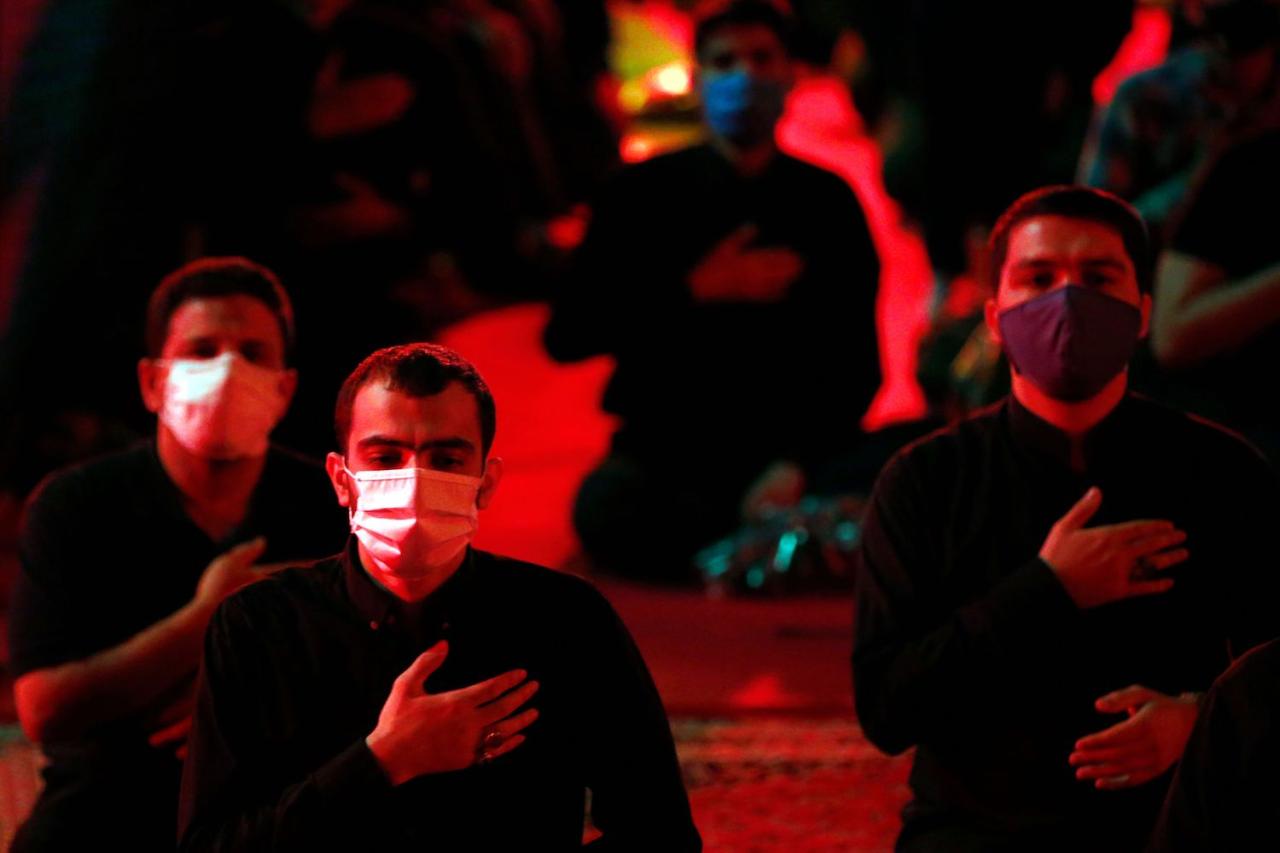
In conclusion, the COVID-19 pandemic profoundly impacted Iran, Pakistan, and Singapore, leaving a lasting imprint on their societies and economies. The diverse responses and outcomes underscore the need for adaptable strategies and context-specific solutions. This comparative study provides valuable insights into the multifaceted challenges of global health crises and the vital role of international cooperation.
FAQ Summary
What were the key differences in vaccination rollout strategies between the three countries?
Iran, Pakistan, and Singapore differed significantly in their vaccination rollout strategies. Singapore prioritized rapid and widespread vaccination, while Iran and Pakistan faced challenges in vaccine accessibility and public confidence, leading to slower uptake.
How did the pandemic affect the healthcare systems of each nation?
Each country’s healthcare system faced unique challenges. Singapore’s robust infrastructure proved relatively resilient, while Iran and Pakistan struggled with strained resources and a lack of essential medical supplies, impacting the ability to manage surges.
What role did international aid play in each country’s pandemic response?
International aid played a crucial role, particularly in supporting countries with limited resources, providing medical supplies, and helping to finance recovery initiatives.
Did the pandemic lead to significant political shifts in any of these countries?
The pandemic influenced political discourse and public opinion in each nation, although the specifics varied. The pandemic sometimes exacerbated existing political tensions and created new challenges for governance.

